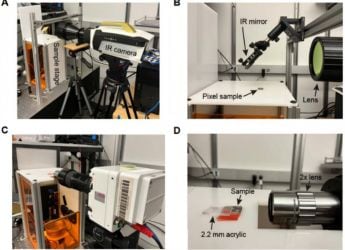- Home
- Science
- Science News
- PSR J0922+0638 Pulsar Keeps Glitching Every 550 Days, Scientists Are Intrigued
PSR J0922+0638 Pulsar Keeps Glitching Every 550 Days, Scientists Are Intrigued
Astronomers uncover regular glitches and mysterious spin cycles in PSR J0922+0638, hinting at unknown internal pulsar physics.

Photo Credit: NASA's Goddard Space Flight Center
PSR J0922+0638 is an ultradense pulsar formed after a supernova
PSR J0922+0638 is one of the pulsars, which are typically ultradense remains of a massive star that exploded as a supernova. These are quite compact and lie a few miles away; however, they carry more weight than several other suns. Their density infers that the internal matter is packed tightly, and the borders diverge toward the black hole. However, the collapse of these stars is prevented due to the pressure from the quantum forces. Neutrons and protons smash together at the time of extreme densities, and then they create a single gigantic atomic nucleus. However, the core of the neutron stars is still a mystery.
Unraveling the Structure and Rotation of PSR J0922+0638
As per space report, these dense stars act as giant atomic nuclei together with the neutrons and protons pulled together under the gravity. One of the behaviours of pulsars is their rotation, which is stable. For example, PSR J0922+0638 rotates after every 0.43063, and this continues for thousands of years.
Astronomers studied the data from over 22 years to further understand the stability. The data was collected from South Africa's MeerKAT array and China's Nanshan Radio Telescope array. Although the changes were minuscule, even less than a billionth, the stars show an energy shift because of the intense physical forces. The scientists found a dozen glitches that we call a little change in the rate of rotation. The glitches followed a cycle in which rotation repeats after every 550 days.
Glitches, Magnetic Cycles, and the Mystery Within Pulsars
Furthermore, due to sudden glitches, a slow and cyclic speeding up and slowing down of the spin of the pulsar was seen during a 500-600-day period. This behaviour made the scientists question the glitches and the time variations of the pulsar, with the unawareness of the exact cause.
The theories put forward by the scientists comprise the magnetic cycle, which is similar to the movement of the superfluid in the star or the sun. Even after these theories, the internal mechanics of a pulsar are speculative. Further, long-term observations are important to know these secrets.
Get your daily dose of tech news, reviews, and insights, in under 80 characters on Gadgets 360 Turbo. Connect with fellow tech lovers on our Forum. Follow us on X, Facebook, WhatsApp, Threads and Google News for instant updates. Catch all the action on our YouTube channel.
Related Stories
- Samsung Galaxy Unpacked 2025
- ChatGPT
- Redmi Note 14 Pro+
- iPhone 16
- Apple Vision Pro
- Oneplus 12
- OnePlus Nord CE 3 Lite 5G
- iPhone 13
- Xiaomi 14 Pro
- Oppo Find N3
- Tecno Spark Go (2023)
- Realme V30
- Best Phones Under 25000
- Samsung Galaxy S24 Series
- Cryptocurrency
- iQoo 12
- Samsung Galaxy S24 Ultra
- Giottus
- Samsung Galaxy Z Flip 5
- Apple 'Scary Fast'
- Housefull 5
- GoPro Hero 12 Black Review
- Invincible Season 2
- JioGlass
- HD Ready TV
- Laptop Under 50000
- Smartwatch Under 10000
- Latest Mobile Phones
- Compare Phones
- Jolla Phone
- Realme P4x 5G
- OnePlus Ace 6T
- Nubia Flip 3
- Nubia Fold
- OPPO A6x 5G
- Samsung Galaxy Z TriFold
- Poco F8 Ultra
- Asus ProArt P16
- MacBook Pro 14-inch (M5, 2025)
- OnePlus Pad Go 2
- Poco Pad M1
- Just Corseca Skywatch Pro
- Honor Watch X5
- Acerpure Nitro Z Series 100-inch QLED TV
- Samsung 43 Inch LED Ultra HD (4K) Smart TV (UA43UE81AFULXL)
- Asus ROG Ally
- Nintendo Switch Lite
- Haier 1.6 Ton 5 Star Inverter Split AC (HSU19G-MZAID5BN-INV)
- Haier 1.6 Ton 5 Star Inverter Split AC (HSU19G-MZAIM5BN-INV)

















